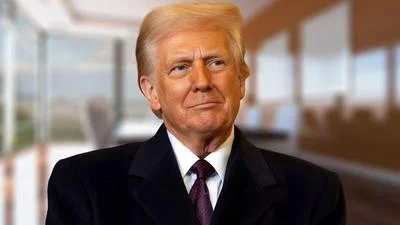Fact Sheet: 21st U.S.-China Joint Commission on Commerce and Trade U.S. Commerce Secretary Gary Locke and U.S. Trade Representative Ron Kirk, together with Chinese Vice Premier Wang Qishan, co-chaired the 21st Joint Commission on Commerce and Trade (JCCT) in Washington, D.C., on December 14-15, 2010. U.S. Secretary of Agriculture Tom Vilsack also participated. Other participants included U.S. Ambassador to China Jon Huntsman, U.S. Trade and Development Agency Director Leocadia Zak, and representatives from the Treasury and State Departments. Senior Chinese officials from 26 other ministries and agencies also attended.
Outlined below are outcomes of the topics discussed. Industry facts and figures appear in italics.
INTELLECTUAL PROPERTY RIGHTS Software Legalization Private sector experts estimate that a 50 percent decrease in the piracy rate in China would result in increased sales of approximately $3.8-4 billion for legitimate software manufacturers.
IPR and Non-Discrimination China and the United States will not adopt or maintain measures that make the location of the development or ownership of intellectual property a direct or indirect condition for eligibility for government procurement preferences for products and services. China and the United States will continue to discuss whether this principle applies to other government measures.
Ministry of Industry and Information Technology Equipment Catalogue China will revise its major equipment catalogue in 2011 and publish a draft for public comment. The revised measure will not be used for import substitution or the provision of export subsidies, or otherwise to discriminate against foreign suppliers.
3G/Future Technologies 3G infrastructure investment in China is expected to reach $10-12 billion by 2011, and future technologies infrastructure investment will likely reach a similar level.
China agreed that it will take an open and transparent approach with respect to operators’ choices that does not provide preferential treatment based on the standard or technology used in 3G or successor networks and allows operators to choose freely among whatever existing or new technologies that may emerge to provide upgraded or advanced services. China also confirmed that regulation of spectrum would not be used as a basis to discriminate against any technology.
GOVERNMENT PROCUREMENT The Chinese Government has indicated that it procures more than $88 billion annually for its own use.
Accession to the WTO Government Procurement Agreement China and the United States recognize the importance of defining domestic products in a flexible manner. The Chinese departments concerned are conducting further modifications and improvements to the draft regulations, taking into consideration U.S. comments on how to maximize procuring entities' efficiencies and cost savings. The two sides will continue consultations and exchanges of information on the definition of domestic products.
EMERGING TECHNOLOGIES 3G/Future Technologies (see indigenous innovation section above).
Smart Grid China plans to invest $10 billion annually from 2011 to 2020 to build a national smart grid and to invest an additional $590 billion in constructing an electric power grid.
China’s renewable energy market is expected to reach $100 billion by 2020. Wind energy is the fastest growing sector.
Express delivery is fundamental to international trade in many sectors including high-tech and knowledge-based industries; it allows companies of all sizes to compete effectively in the global market. Express delivery creates 1.3 million jobs directly, and supports 2.75 million jobs in total.
Investigation and Shutdown of Fake EDS Websites Beef and Beef Products Since 1997, U.S. pharmaceuticals exports to China have grown considerably from $149 million to nearly 1 billion in 2009.
Regulatory Data Protection The Chinese side agrees to further combat counterfeit and substandard drugs through international cooperation. The establishment of the SFDA Complaint Center is underway. China and the United States agree to work closely to cooperate and conduct information exchange concerning counterfeit drug activities. Both sides shall provide information about cases of counterfeit drugs through the regulatory channel.
STANDARDS AND TESTING Trade of goods between the U.S. and China that could be included in a U.S.-China Mutual Recognition Agreement exceeded $58 billion in 2009 alone.
China announced it is going to set up a “One-stop-Shopping” mechanism to establish one application for two certification processes for mobile devices. China agreed to initiate exchanges regarding bilateral APECTEL Mutual Recognition Agreement negotiations.
TRAVEL AND TOURISM Since the initiation of travel under the Memorandum of Understanding in 2008, total passenger travel from China to the United States has increased by 23 percent, a total export value of $5.5 billion (as of July 2010). China is our fastest growing market and by 2015 it is projected to become the 6th largest arrival market for the United States (up from 16th before the MOU in 2008).
COMMERCIAL LAW There is a potential for extensive opportunities for U.S. recyclers and producers of related equipment in the China market. According to Chinese sources, China produced an estimated 1.7 million tons of electronic scrap in 2006, a number that could grow to around 5.4 million tons by 2015.
Trade of goods between the United States and China that could be included in a U.S.-China Mutual Recognition Agreement exceeded $58 billion in 2009 alone.
The United States and China each publish data that measure the bilateral merchandise trade flows between these two trading partners. Although both countries follow international statistical standards, differences in the merchandise trade data arise as a result of data and methodological differences. The goal of this work plan is to extend the statistics dialogue and research already conducted under auspices of the JCCT. Like the previous work, this effort is not to change the official statistics reported by either country, but to understand better the data and methodologies used in the collection and compilation of those official trade statistics.
Source: U.S. Department of Commerce








